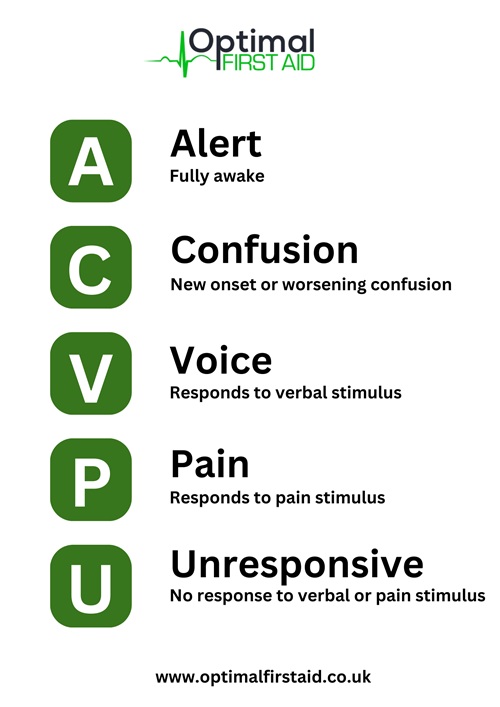What is AVPU or ACVPU
The AVPU scale is a simple tool used to assess a person’s level of consciousness or responsiveness, often used in emergency medical situations. It helps healthcare providers quickly determine the severity of a patient’s condition. The scale stands for:
- A: Alert – The person is fully awake and responsive. They can answer questions and follow commands appropriately.
- V: Verbal – The person is not fully alert but responds to verbal stimuli (such as being spoken to or shaken gently). Their responses might be confused or delayed.
- P: Pain – The person only responds to painful stimuli (e.g., a pinch or pressure on the nailbed). If there is no response to verbal prompts, this level indicates a reduced level of consciousness.
- U: Unresponsive – The person does not respond to any stimuli, whether verbal or painful.
This scale helps determine whether further assessment or intervention is needed. It is especially useful in pre-hospital care, such as during ambulance assessments or emergency situations.

AVPU or ACVPU
AVPU has been used for years and is the original method to rapidly assess the level of consciousness of a patient, this scale is still commonly referred to. With the development of new-onset confusion (‘C‘) was added to the score to make ACVPU.
Patients who develop new or worsening confusion (e.g. disorientation) are at risk of deterioration. Therefore, identifying and implementing appropriate treatment for these patients is important.
What does ACVPU indicate?
New confusion in an alert patient is a warning sign of serious illness.
An acute change in a patient’s level of consciousness can indicate clinical deterioration or acute illness severity.
If someone suddenly becomes confused, you should seek medical help immediately.
Contact Optimal First Aid
If you have any questions or queries – or need some advice about any of our courses, please contact us

